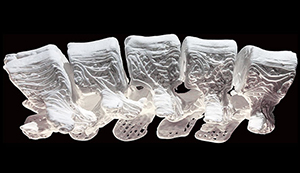Promising biomaterial to build better bones with 3-D printing
29. 9. 2016 | Northwestern University | www.northwestern.edu
A Northwestern University research team has developed a 3-D printable ink that produces a synthetic bone implant that rapidly induces bone regeneration and growth. This hyperelastic “bone” material, the shape of which can be easily customized, one day could be especially useful for the treatment of bone defects in children.
Bone implantation surgery is never an easy process, but it is particularly painful and complicated for children. With both adults and children, often times bone is harvested from elsewhere in the body to replace the missing bone, which can lead to other complications and pain. Metallic implants are sometimes used, but this is not a permanent fix for growing children.

New 3-D printed biomaterial is a mix of hydroxyapatite (a calcium mineral found naturally in human bone) and a biocompatible, biodegradable polymer that is used in many medical applications, including sutures. Hyperelastic “bone” material shows great promise in vivo animal models; this success lies in the printed structure’s unique properties. The material is majority hydroxyapatite, yet it is hyperelastic, robust and porous at the nano, micro and macro levels.
Read more at Northwestern University
Image Credit: Adam E. Jakus
-jk-




